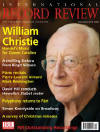Texte paru dans: / Appeared in:
*

International Record Review - (12//2014)
Pour
s'abonner / Subscription information
Oehms
OC897

Code-barres / Barcode
: 4260034868977
Consultez toutes les évaluations recensées pour ce cd
~~~~ Reach all the evaluations located for this CD
L'Accademia Giocosa is a fairly new ensemble formed by youthful members of the Bavarian Radio Symphony Orchestra to play Baroque music on historically correct instruments. It is not unknown for musicians from modern instrument orchestras to cross over on occasion to period instruments. Sometimes, this is mere dabbling, perhaps seeking some Early Music chic. (One Australian orchestra is an example of this.) Some performers, however, can switch convincingly between the two worlds. The Japanese violinist Shunske Sato is an example of a musician who successfully pursues parallel careers in period‑instrument and mainstream performance. I cannot speak for his modern violin playing (I assume it is of a high order), but he is one of the most exciting Baroque performers of the new generation. Judging by the playing on this disc, the same can be said of the rest of his colleagues in L'Accademia Giocosa.
The bland titles of most of the works on this recording ‑ Trio, Sonata, Concerto ‑ give little hint of the richness and diversity they encompass. Only the unusually named Concert François suggests something other than production‑line Baroque fare. Indeed, in some cases the titles could actually give a false impression. Who would expect a concerto to use merely five instruments, while a sonata has ten? Despite more than 30 years of devotion to Telemann, I am still constantly amazed by his inventiveness. This CD encompasses a splendid collection of mostly unknown works (more on that later), all of which are of the highest quality.
The concert begins with the
Suite in G minor for oboes and strings ‑ the so-called Concert François
‑ distinguished by suave gravitas. From the opening bars, listeners will
notice three things: this is serious music of real substance; L'Accademia
Giocosa comprises skilled and sensitive musicians; and Oehms Classics has
given the music and musicians a crisp yet atmospheric recording. The punchy
strings and plangent Baroque oboes, played by Stefan Schilli and Tobias
Vogelmann, are beautifully supported by an exceptionally strong continuo
group, among whom the Baroque bassoonist Makiko Kurabayashi stands out for
her energetic (and pleasinglv audible) contribution.
The startling clarity of the recording continues in the next piece, a zesty and joyous trio for two violins and basso continuo, played with matching ‑ almost competing ‑ virtuosity by Sato and David van Dijk. The mood turns pleasingly sombre again with the following G minor Trio for flute, violin and continuo, which is another seriously good Telemann discovery. Henrik Wiese's Baroque flute tone is soft‑edged but not retiring. It contrasts delightfully with the biting timbre produced by the third Baroque violinist in the recording, Marije Grevink. Nor should the vigorous contributions of cellist Johannes Berger and harpsichordist Peter Kofler be overlooked. Next we hear Telemann at his effervescent best in a Concerto in B flat for two violins, viola and basso contimio, (there is no orchestra). The presence of the viola gives the work a richer texture than the earlier Trio for two violins; but the work is just as high‑spirited. Van Dijk and Grevinck are joined by Anja Kreynacke, whose Baroque viola makes a welcome contribution ‑ at times joining the violinists' acrobatics, elsewhere playing a pseudo‑rustic drone accompaniment.
Telemann's four‑movement Concerto in D major for flute and strings is a major contribution to the Baroque flute (or recorder) repertory. There are delights and surprises in every movement, above all the final Menuet ‑ Presto ‑ Menuet da Capo, where the solo writing has the exhilarating joie de vivre that we love so much in Telemann. Wiese's playing, with some entertainingly extravagant ornamentation, is even more impressive here than in the Trio Sonata. This concerto deserves to be as well known as Telemann's beloved Suite in A minor for recorder and strings.
The programme concludes, as it began, with a minor‑key work in five movements. On this occasion it is called a Sonata, for oboes, bassoon, strings and basso continuo, but it is quite reminiscent of the orchestral suites of pioneering Central European Lullistes such as Kusser and Venturim. From its foreboding opening Gravement to its learned final movement, deceptively entitled Gay, this is a serious work of high genius. If it had been attributed to Bach, there would be multiple recordings in the catalogues. L'Accademia Giocosa plays it with vigour and grace, the phrasing thoughtful but not over‑studied. In a disc crowded with goodies, it is perhaps the plum.
Great music, superb ‑performances, reference‑standard recording ‑ so why no 'Outstanding' award? Well, the only disappointment with this release is the booklet documentation. The essay is a fair summary of Telemann's life and qualities (though it may be a stretch to call 'modest', as the author does, a man who published three autobiographies). It is, however, fitterly generic, without a single word about the individual pieces appearing on the disc. Since the back cover claims that all but one of them are world premiere recordings (falsely in the case of the Flute Concerto), to give no information about their provenance, certainty of attribution, circumstances and date of composition and so on is a serious failing.
With that grumble uttered, this disc is highly recommended, particularly to anyone who harbours lingering doubts about the heights Telemann was capable of scaling.
Cliquez l'un ou l'autre
bouton pour découvrir bien d'autres critiques de CD
Click either button for many other reviews


